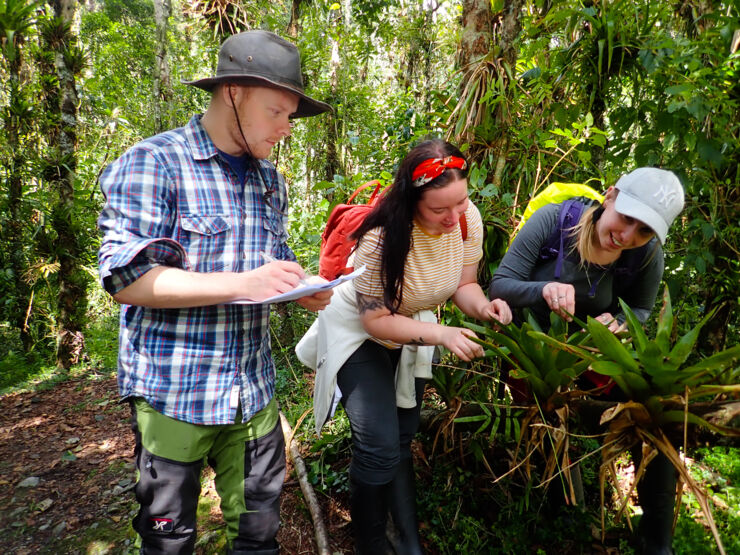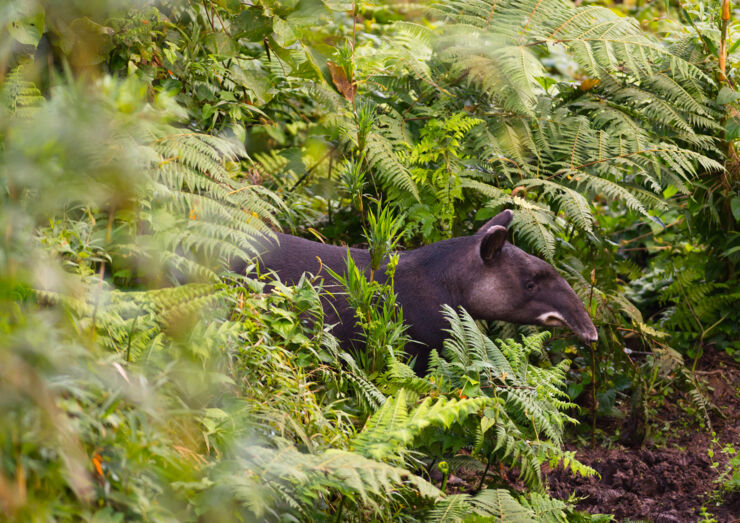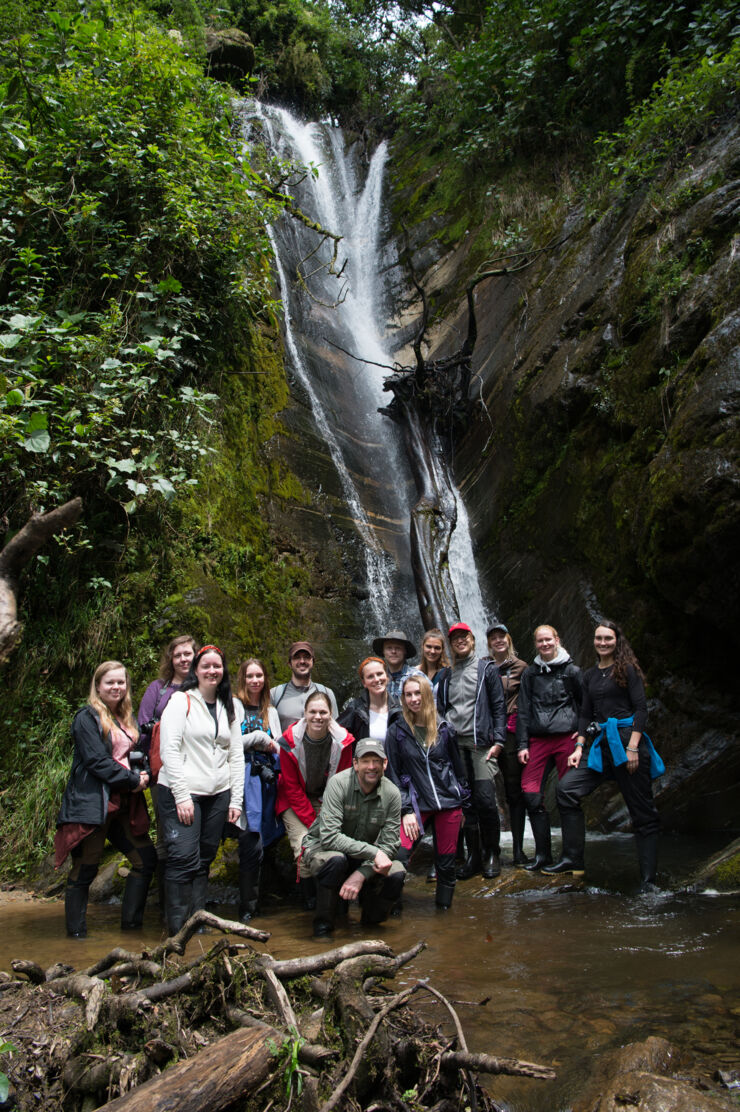Now we have left Earth. That was Agnes Ytterberg’s reaction, as she stood at 2,000 metres above sea level, with the rainforest below her.
Agnes is one of the 14 students who travelled to Ecuador for a two-week study trip in March, as part of a course for students taking the master’s programmes Ecology and the Environment and Applied Ethology and Animal Biology.
“The trip took our studies to another level altogether. Physically standing in the middle of an environment is completely different to reading the theory about it. We were able to really take in the places. Listen, feel, and we could speak with people who live and work here. And ask the guides who were with us every day all the questions we wanted to”, says Agnes Ytterberg.
The overall theme was conservation, restoration of exploited areas, protection of habitats and ecosystems, and discussions about sustainability.
Photo credit Thor Balkhed“My idea was to give the students more hope than frustration. A lot is being done to restore destroyed rainforest and I wanted to present inspiring projects”, says Karl-Olof Bergman, senior lecturer at Linköping University.
He had chosen four areas for the students to study. Two of the areas were cloud rainforests at 2-3,000 metres above sea level – for the sake of comparison, one forest west and one forest east of the Andes. The next destination was the rainforest in the Amazon lowlands with flood plains of various character. The trip ended at 4,000 metres with alpine shrub steppe and grass steppe and a very special forest, the only one in the world that grows at such a high altitude.
“In three of the environments, conservation is funded by foundations, organisations and visitor’s fees. For instance land purchases, species protection and research projects. And on site we got to see how the organisation Save the Rainforest Sweden protects the cloud rainforest in northwestern Ecuador.”
In contrast, slash-and-burn expanses and failing ecosystems float past outside the bus windows.
“On the surface it can be beautiful, for instance vast green plains with solitary trees. Until you discover invasive grass species and realise that this is a former rainforest. It’s important to be able to understand what you see”, says Karl-Olof Bergman.
Studied different rainforest habitats
The students’ assignments were mainly about comparing how flora and fauna develop in different stages of restoration, as opposed to virgin habitats and biotopes. Each group had prepared presentations about their own habitat based on literature studies, everything from background story to discussion of how initiatives for the restoration of land areas have proceeded – and from which starting points.

“The balance between utilisation and conservation. How are people to make a living for themselves up here? Nowadays cattle and sheep graze on these lands, which causes erosion. A return to traditional domesticated animals such as llamas could be one solution.”
More hands-on activities include taking inventories of insects and bird species, and investigating cycads and plants whose habitats are trees and tree forks.
“It was amazing to see how, for instance, rosette plants and orchids grow larger with time. There is a clear difference between their size in replanted and in virgin forests. Every tree is an ecosystem in itself, and the older, the richer. It was fascinating to see how the plants in a sense gather up a pile of earth in their rosettes, improving the habitat.”
Testing their own measurement methods
Before the trip, the students had developed measurement methods to be tested in the field.
“For instance, models for taking an inventory of or estimating the size of an animal population. In our group we had expected that some things would miss the mark, but they worked well in almost every case”, says Niklas Lindell.
Pink river dolphins, anacondas, woolly monkeys, ara macaws, sloths, large bird spiders and cockroaches – the Amazon is full of magical animals. Equally unforgettable were the Andes’ cloud rainforests, with their strange tree ferns and multitudes of orchids and hummingbirds.
“We were completely overwhelmed from day one. The rainforest was just as you’d imagine. Full of noises and smells”, says Agnes Ytterberg.

“And imagine, when I went out onto the balcony of the lodge where we were staying in the cloud rainforest, below there was a tapir with its calf. How lucky was that!”
But the major highlight was the photos from a night camera that the students installed.
“We managed to get an ocelot as it plodded by”, says Agnes Ytterberg.
“It’s a common cat in the forests of Ecuador, but it’s very uncommon to spot one”, adds Karl-Olof Bergman.
Lockdown due to corona pandemic
Everything went to plan, until day 13.
“In the Amazon, the internet doesn’t work, and quite late in the game we started to realise the massive consequences of the corona pandemic. The military had been called in, to make sure the tourists left the areas. We were seen as potential carriers of the disease, and had to shorten our trip by half a day. Then we were in lockdown in our hotel in Quito, as there was a curfew.”
One day and 50 chocolate biscuits later, it was time for repeated rounds of queueing at the airport, in order to skirt the travel restrictions for Europe.
“After several hours we managed to rebook the tickets for four students who were actually going in the other direction. The others in the group were able to fly out on their regular tickets, except for one who had to stay back with us two teachers. The three of us got a late-night flight to Paris and on to Stockholm, and then get a bus home”, explains Karl-Olof Bergman.
Previously published in LiU magazine issue 2, 2020
Translated by Martin Mirko

